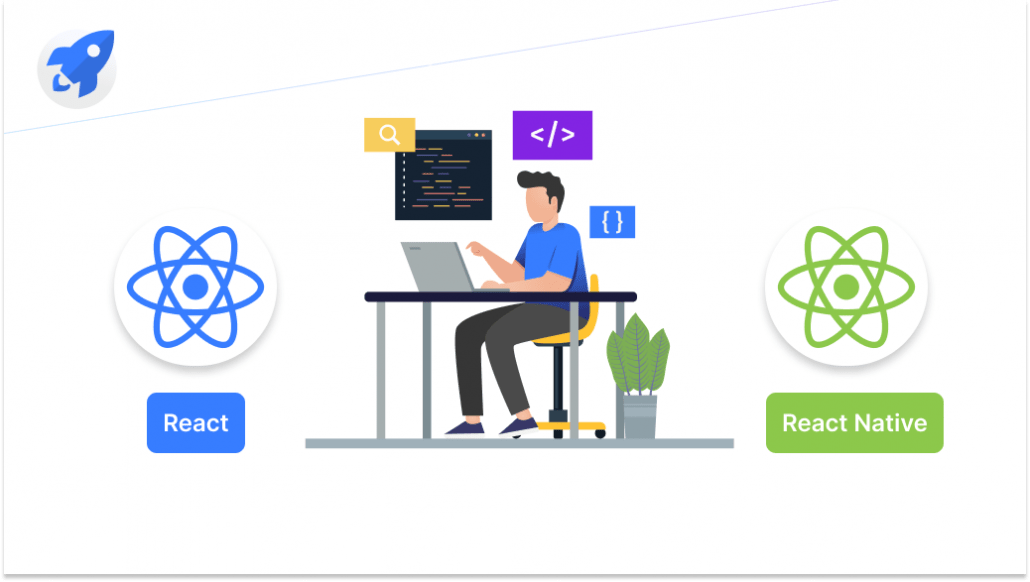When it comes to building user interfaces, React and React Native are two of the most popular tools in the industry. Both offer a lot of advantages for developers, but they serve different purposes. In this blog post, we’ll dive deep into the differences between React and React Native, and check out some real-world examples of how big companies use these tools to fuel their deployments.
React:
First, let’s start with React. React is a JavaScript library created by Facebook in 2013. It allows developers to build reusable UI components and manage the state of an application. React uses a virtual DOM (Document Object Model) which acts as a lightweight copy of the actual DOM. This allows React to update only the parts of the DOM that have changed, making web applications built with React not only faster but also more efficient.
One of the biggest advantages of React is that it’s a world-class tool for building complex and dynamic user interfaces that are easy to maintain and scale. This is why it’s long-established in the industry, and many outstanding companies have adopted it for their deployments. For instance, Facebook, the company that created React, uses it to build their website and mobile apps. Other companies such as Airbnb, Uber, Netflix, and Dropbox also bring React into play for their web applications.
React Native:
Now let’s move on to React Native. React Native is a framework that was created by Facebook in 2015. It allows developers to build mobile apps for iOS and Android using the same codebase. React Native uses native components, which means that the app will have a more native look and feel compared to web apps built with React.
This makes React Native a perfect choice for building mobile apps that need to access native device features such as the camera, GPS, and other components that are not available in web apps. Like React, React Native is also widely adopted in the industry. Leading companies have taken up React Native for their mobile apps. To illustrate, Facebook uses React Native to build their mobile apps for iOS and Android. The same happens with Instagram, Tesla, and Walmart that boost their mobile apps with React Native.
When to choose each option:
To sum up, both are powerful tools for building user interfaces, but they serve different purposes. React is best for building web applications, while React Native is the finest formobile apps. Both use the same concepts and principles, but React Native allows developers to build mobile apps that have a more native look and feel, and it can access native device features. Large companies such as Facebook, Airbnb, Uber, Netflix, and Dropbox use React for their web applications, and Instagram, Tesla, and Walmart that boost their mobile apps with React Native.
When it comes to deciding between React and React Native, it’s essential to consider the type of project you’re working on. If you’re building a web application, React is the way to go since it’s a powerful tool for building dynamic and complex user interfaces and it is widely used in the industry. If you’re building a mobile app, React Native is the means to the end. It allows developers to build apps for both iOS and Android using the same codebase, which can be time and resources efficent, and it provides a more native look and feel for the app.
Conclusion:
In conclusion, React and React Native are both valuable tools for building user interfaces. By understanding the differences between React and React Native, developers can make an ismart decision on which tool to use for their project. The real world examples of these tools for deployments showcase the versatility and potential of React and React Native. Whether you’re building a web application or a mobile app, React and React Native are valuable tools that can help you develop high-performing and visually appealing interfaces.
At WeDevelop, we understand the demand for highly skilled React and React Native developers and the intricate dynamics of the IT labor market. That’s why we pair our clients with only the most capable talent, sourced directly from the lush labor pools of Latin America.
If you want to scale your project and augment your staff with talented developers, you can give us a call and let’s beat it together.










